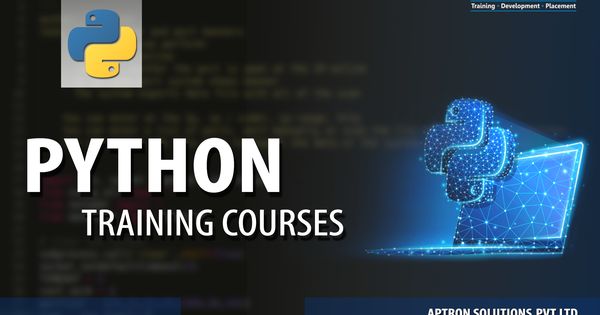
+91-7065273000
Python For Beginners
Aptron

Welcome! Are you completely new to programming? If not then we presume you will be looking for information about why and how to get started with Python. Fortunately an experienced programmer in any programming language (whatever it may be) can pick up Python very quickly. It's also easy for beginners to use and learn.
Learning
Before getting started, you may want to find out which IDEs and text editors are tailored to make Python editing easy, browse the list of introductory books, or look at code samples that you might find helpful.
The online documentation is your first port of call for definitive information. There is a fairly brief tutorial that gives you basic information about the language and gets you started. You can follow this by looking at the library reference for a full description of Python's many libraries and the language reference for a complete (though somewhat dry) explanation of Python's syntax. If you are looking for common Python recipes and patterns, you can browse the Active State Python Cookbook.
Why learn Python?
Python provides many useful features to the programmer. These features make it the most popular and widely used language. We have listed below few-essential features of Python.
Easy to use and Learn
Expressive Language
Interpreted Language
Object-Oriented Language
Open Source Language
Extensible
Learn Standard Library
GUI Programming Support
Integrated
Embeddable
Dynamic Memory Allocation
Wide Range of Libraries and Frameworks
Python 2 vs. Python 3
In most of the programming languages, whenever a new version releases, it supports the features and syntax of the existing version of the language, therefore, it is easier for the projects to switch in the newer version. However, in the case of Python, the two versions Python 2 and Python 3 are very much different from each other.
A list of differences between Python 2 and Python 3 are given below:
Python 2 uses print as a statement and used as print "something" to print some string on the console. On the other hand, Python 3 uses print as a function and used as print("something") to print something on the console.
Python 2 uses the function raw_input() to accept the user's input. It returns the string representing the value, which is typed by the user. To convert it into the integer, we need to use the int() function in Python. On the other hand, Python 3 uses input() function which automatically interprets the type of input entered by the user. However, we can cast this value to any type by using primitive functions (int(), str(), etc.).
In Python 2, the implicit string type is ASCII, whereas, in Python 3, the implicit string type is Unicode.
Python 3 doesn't contain the xrange() function of Python 2. The xrange() is the variant of range() function which returns a xrange object that works similar to Java iterator. The range() returns a list for example the function range(0,3) contains 0, 1, 2.
There is also a small change made in Exception handling in Python 3. It defines a keyword as which is necessary to be used. We will discuss it in the Exception handling section of Python programming tutorial.
Python Training Institute in Noida
Aptron is the best Python Training Institute in Noida with high tech infrastructure aspirants learning the skills for python. Today there is a growing trend for corporate training. An increasing number of organizations are offering corporate training to enrich their employees with the necessary skills that improve their performance and performance. Python is a very popular language and python corporate training helps to master skills and gain in-depth knowledge. use python language in their IT environment.